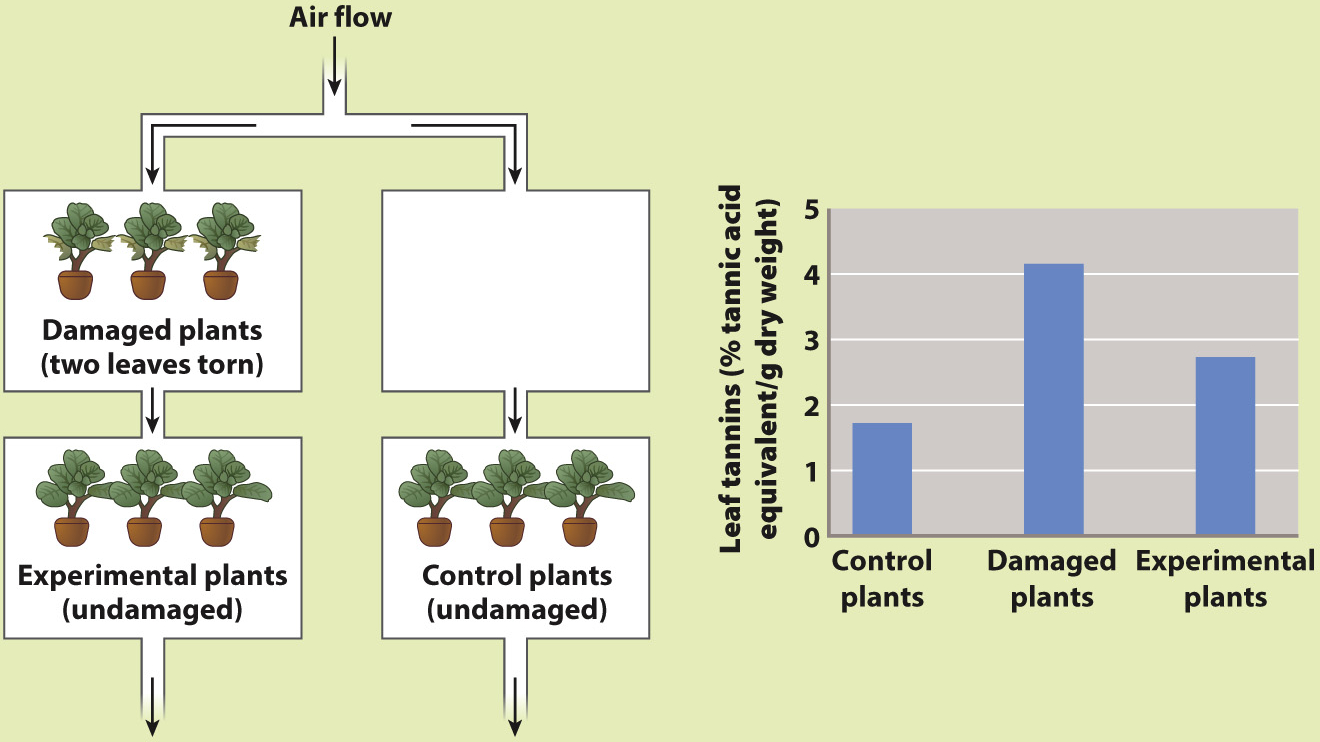HOW DO WE KNOW?
FIG. 32.16
Can plants communicate?
BACKGROUND Plants respond to herbivore damage by producing chemicals that make their tissues less palatable. Field experiments in which caterpillars were added to target plants suggested that undamaged neighboring plants increased their production of defensive chemicals, whereas plants farther away did not.
HYPOTHESIS Volatile chemicals released from plants that have been attacked by herbivores elicit a defensive response in undamaged plants.
EXPERIMENT One set of plants was placed downwind of other plants in which two leaves were torn, simulating herbivore damage, and a set of control plants was placed downwind of an empty chamber. The concentrations of defensive compounds in all sets of plants were measured and compared.
RESULTS When measured 52 hours after the initial damage, both the damaged plants and the undamaged experimental plants exhibited elevated levels of defensive compounds in their leaves compared to control plants.

CONCLUSION Volatile chemicals released from damaged plant tissues can trigger the production of defensive chemicals in undamaged plants.
FOLLOW-
SOURCE Baldwin, I. T., and J. C. Schulze. 1983. “Rapid Changes in Tree Leaf Chemistry Induced by Damage: Evidence for Communication Between Plants.” Science 221:277–